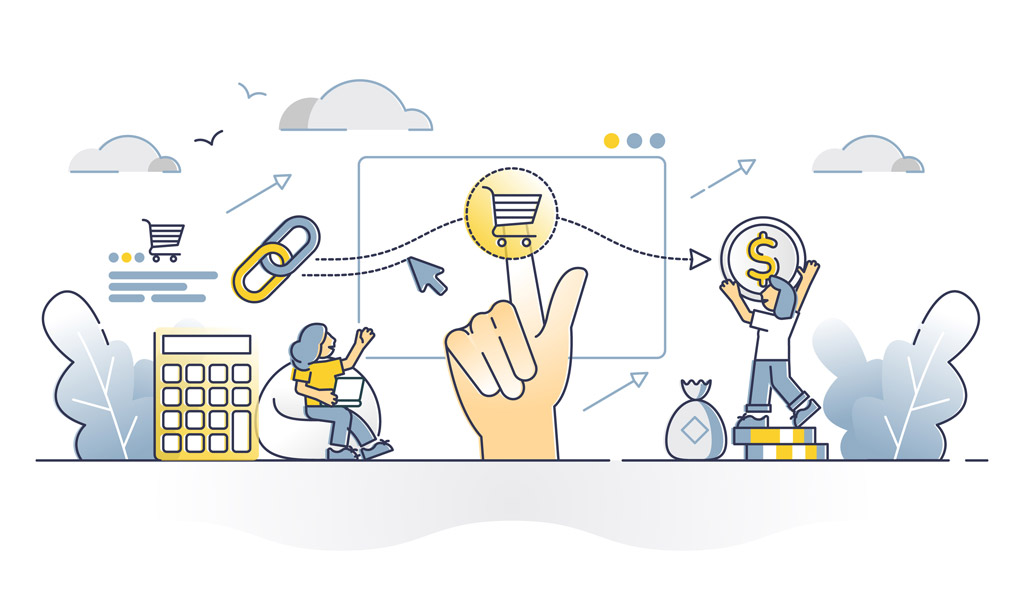SaaS B2B Pricing Issues
1. Cost-Plus Pricing
Cost-plus pricing is a strategy where you determine your SaaS service’s price by adding up the costs of production and adding a specific markup on top. For example, you would add up the direct material cost, labor cost, and any overhead costs. Then, you decide on a % markup. Here’s an example:
Direct labor costs - $8.97
Direct materials cost - $17.00
Allocated overhead - $7.50
Total: $33.47
% Markup: 25%
Cost of SaaS product: $41.84There are advantages and disadvantages to a cost-plus pricing strategy and being aware of these is critical when designing your SaaS pricing strategy. Many B2B SaaS companies go straight to cost-plus thinking it makes the most logical sense. If you’re always pricing above your production costs, then you’ll always be in the green. While cost-plus sounds perfectly logical on paper, it’s a mistake to run with it without considering the pros and cons. A cost-plus strategy isn’t a good fit for all B2B SaaS businesses and can often mean you make less money long-term.
Advantages of Cost-Plus
It’s simple.
As long as you have a calculator (and even if you don’t), you can work out your cost-plus strategy. There are no long nights hashing over the details. All you have to decide is what the markup should be, and everything else just falls into place.
Consistent
You don’t have to go back to the drawing board every time you implement a new feature or deploy a new product. Your pricing will be consistent across your product range, and you don’t have to battle with tricky situations regarding which features add enough value to drive the price up significantly.
Justifiable
It’s easier to usher in a price hike with a cost-plus strategy because you can clearly justify the reason. Your production costs have gone up, so the price must go up. The logic is simple, easy to understand, and easy to accept.
Disadvantages of Cost-Plus Pricing
It ignores competition.
Your competitors might be charging significantly different prices and be having great success with this alternate strategy. They might consider many factors to determine price, and the end result is a strategy that most business-customers find appealing. By proceeding with cost-plus, you might be setting yourself apart from the competition in a negative way.
Less Prudent Design
Under a cost-plus model, the engineering team typically has more control over what to do with the product. While this can be a good thing, it can also lead to implementing features that don’t appeal to the target audience. When you have a pricing strategy that is closely aligned with specific-feature-set value, engineers can be more focused on creating products with appropriate features.
Verdict on Cost-Plus Pricing
If you like the sound of this strategy, proceed with caution because it’s likely a bad fit for most B2B SaaS companies. Your customers don’t care about production costs and will often be willing to pay more for genuinely competitive features. That is particularly true in the B2B space, where a single feature can be critical to the company you are trying to sell to.

2. Copying Your Competitors
Copying your competitors, otherwise called competition-based pricing, is a common mistake many B2B SaaS startups make. On the surface, it seems like a good idea. If your competitors are charging X, and you feel compelled to do the same or at least be very close to their prices. However, there are several reasons why simply copying your competitors’ pricing strategy isn’t a good idea:
You Could be Undervaluing Your Product
So, you’re thinking of copying your competitor’s pricing strategy, but we can bet you’ve not copied everything else. Your competitor’s approach is based on their product, not yours. Do you have features that make your product more attractive than your competitors? Can your software do more? Is it more user-friendly? More powerful? By using a competition-based strategy, you’re not focusing on what makes your product special. Businesses could be willing to spend more on your product because it offers more value.
You Become too Focused on Price
Pricing is essential; all businesses need to make money. But your primary goal should be to create a product that offers high value to customers. As a B2B SaaS company, your primary differentiator shouldn’t be price; it should be your features and what you offer. In a competition-based model, you can lose sight of the primary goal.
3. Economic Value Pricing
In this strategy, you set your price based on the economic value it brings to your customers. For example, let’s say your SaaS product saves the average company 300 hours of manual admin time a year. You determine that 300 hours is equivalent to $130,000, so companies can essentially save $130,000 by signing up for your service. But what percentage of that cost-saving do you charge your customers? Do you charge 10%? 20%? 30%? More? Whatever number you pick is likely to be at least partly arbitrary, which isn’t ideal. You should always be able to justify your price based on the research you conduct.
The pricing models we’ve looked at today are valid approaches used by B2B SaaS companies worldwide. However, it’s essential to know why you’re choosing a particular model and not to make the mistake of just picking the one you like the sound of. You must weigh up each model’s pros and cons, so you don’t make a mistake. Is a value-based model a mistake? No, not necessary. Is it a mistake for some companies? Sure. Can it be the right model but still implemented poorly? Absolutely, and we see this all the time.
Here are the advantages and disadvantages of a value-based pricing model to help you make an informed decision.
Advantages of Value-Based Pricing
You can boost profits
With a cost-plus model, your profits are tied to your production costs and markup. You can make consistent profits, but you can’t boost your profits without changing the markup. And if you change the markup (and your customers know you’re using this model), you’ll likely have to justify this to your customers, and it can get you into some awkward situations.
With a value-based pricing model, you can increase your prices as the value of your product increases. If next year, a new feature allows your ideal customer to save 500 hours of manual work, then you can adjust your price accordingly. This model is also more flexible because value is subjective. Companies are willing to pay more for a product that will significantly impact their operation, regardless of other factors. It’s like those water parks in hot countries that charge high prices for water and other beverages. If you need water, you’ll pay whatever price they ask. This isn’t to say you should overcharge for your product, but that you should know the value of your product and what your customers stand to gain by buying it. If you offer something with dramatically more value than your competitors, then you can justify a higher price.
Disadvantages of Value-Based Pricing
Research
Implementing a value-based pricing strategy requires a lot of research. You need to know precisely what your competitors are offering, what your customers want and need, and how the landscape might change in the future. Without doing your research, you can really miss the mark and end up with a pricing strategy that falls flat.
It’s vulnerable to competition
If you do price your SaaS product above market rate because you believe you offer something more attractive than your competitors, then just be aware that your competitors can end up affecting your price. How? Because the more B2B SaaS companies there are with similar prices, the more it looks like you’re overcharging. Your competitors essentially set the expected price. To get around this, you have to be extremely clear about communicating your added value.

3 Tips For Improving Your SaaS Pricing Page
The pricing page on your website is where you communicate your offer to your customers. Getting this page perfect is paramount if you want to turn curious viewers into interested potential buyers. Even if someone likes the product, many people won’t look any further if they don’t like what they see on the pricing page. If they’re confused,
1. Know the Difference Between Your Design and Strategy
Many businesses focus too heavily on getting the design right when the pricing strategy is wrong. If you take anything from this section, it should be this: if you have a clunky and ugly design but a strong pricing strategy, you’ll still convert customers. That’s not to say that your design doesn’t matter at all. Of course, a stunning design will help bring your pricing strategy to life and draw your potential customers’ attention to the right places. However, if your pricing strategy doesn’t match the value you’re offering, even the most beautiful design won’t save you. You can’t trick your customers into signing up for your SaaS product with a sparkly page.
2. Should You Have a Pricing Page?
Having a pricing page isn’t the right route for every SaaS business. For example, you might opt for simply having a “talk to the sales team” button, or a “start free trial button”. If the customer follows the call to action (CTA), you can then give them more details about your pricing because they have expressed an active interest in your product. Customers who follow the CTA without viewing your pricing page automatically move further down the sales funnel.
However, having a pricing page is equally a good strategy. By putting your prices out there transparently, you’re cultivating trust with your potential customers.
3. Keep it Simple
If you have a complex pricing strategy with lots of variables for things like company size, how many people can use the product with certain privileges, and so on, having a pricing page might not be the best idea. As a general rule, pricing pages should be as simple as possible. As we discussed earlier, the goal of a pricing page is to communicate your pricing effectively in a way that’s easy to understand. If your website visitors are confused about your pricing strategy, then you’ve failed. Now, of course, some pricing strategies are confusing to outsiders, and that’s fine. You have designed your strategy with lots of factors in mind. But by letting your customers come to you to ask for more information, you can ask them some questions and only tell them the strategy that applies to their situation.




















